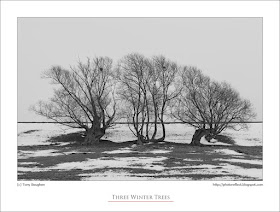click photo to enlarge
Like many people I have a deep curiosity about the natural and man-made world around me. I like to know why things are as they are, what things are called, what differentiates them etc. My curiosity knows, almost, no bounds. However, there are some aspects of the natural world about which I have a long-term confusion.For example, despite my early deep interest and lingering, life-time less deep interest in bird life, I still have some difficulty differentiating the less common waders. The fact that their plumage can be very similar and that it often differs according to the age of the bird or the season doesn't make the task easy. The same is true of the many varieties of willow tree that can be found growing in the Britain. In my garden I have a large white willow tree (Salix alba) of the weeping variety growing next to a stream. In fact, it's not quite as large as it was. Just over a year ago I had it pollarded because it was outgrowing its space. It's a very common and distinctive tree that has either an upright habit or a pendulous (weeping) habit. That's the Salix variety I have no trouble identifying. However, when it comes to the Goat Willow (or Sallow), the Eared Willow, the Grey Willow, the Creeping Willow, the Caspian Willow, the Common Osier, the Crack Willow and the Bay-Leaved Willow I confess to being lost. I know they exist, I know something of where they are found and the uses to which they can be put. But, I can't distinguish them one from the other. It's not just that many of them are quite similar (some are distinctive), it's that I haven't really committed to studying and learning the differences.
So, I've set myself the task of increasing my knowledge of this group of trees and working out how to identify them. I don't imagine I'll unravel them all, but if I could distinguish the commoner varieties I'd be very happy. It was photographing the trees above by the raised bank of the River Welland near Crowland in Lincolnshire that triggered my determination to do this. As far as these three go I can say what they're not, but not what they are. I think they are a variety of willow, but I may be wrong. So, I've been reading up on the subject, learning about each willow's winter, leafless silhouettes and the characteristics of their leaves and flowers. The warmer weather will find me out and about, testing my knowledge and photographing them. Roll on spring!
photograph and text (c) T. Boughen
Camera: Canon
Mode: Aperture Priority
Focal Length: 35mm
F No: f6.3
Shutter Speed: 1/200 sec
ISO: 100
Exposure Compensation: -0.33 EV
Image Stabilisation: On
